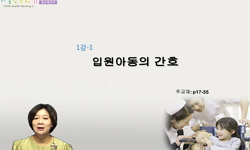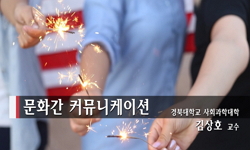This paper is intended to reveal psychic development of infants. Between six and eight months old, a child begins to recognize a familiar figure, in particular the mother, and a stranger. The child manifests anxiety when a stranger approaches him. Spi...
http://chineseinput.net/에서 pinyin(병음)방식으로 중국어를 변환할 수 있습니다.
변환된 중국어를 복사하여 사용하시면 됩니다.
- 中文 을 입력하시려면 zhongwen을 입력하시고 space를누르시면됩니다.
- 北京 을 입력하시려면 beijing을 입력하시고 space를 누르시면 됩니다.
https://www.riss.kr/link?id=A76516179
- 저자
- 발행기관
- 학술지명
- 권호사항
-
발행연도
2009
-
작성언어
-
-
주제어
클라인 ; 리깡 ; 프로이트 ; 부정성 ; 분리불안 ; 거울단계 ; 응시 ; 주체형성 ; M. Klein ; J. Lacan ; S. Freud ; negatively ; separation anxiety ; mirror stage ; gaze ; subject formation
-
KDC
840
-
등재정보
KCI등재
-
자료형태
학술저널
- 발행기관 URL
-
수록면
159-183(25쪽)
- 제공처
-
0
상세조회 -
0
다운로드
부가정보
다국어 초록 (Multilingual Abstract)
This paper is intended to reveal psychic development of infants. Between six and eight months old, a child begins to recognize a familiar figure, in particular the mother, and a stranger. The child manifests anxiety when a stranger approaches him. Spitz call it the second organizer. The so-called eight-month-anxiety is the sign of attachment and true object relation, an indicator of new achievement. But this anxiety isn't merely an adaptive mechanism and it's understanding needs a deep, psychoanalytic interpretation. In Freudian thought, eight-month-anxiety is a response to the child's perception that the stranger's face is not identical with the memory of mother's face, which is so-called a dangerous situation. Many attachment theorists and Spitz agree to this idea. This early dangerous situation is an anxiety not only from the strangers, but also from the primary mother(a mother's body) who is Thing(das Ding). When Thing isn't symbolized, the young subject feels anxiety. In Sartre's perspective, being seen, rather than seeing, is the cause of the anxiety of an eight-month-old baby. The mother's look is supportive and affectionate while stranger's look is alienating, so the stranger's look give rise to anxiety in child. We often see that the child continues to look at the stranger, even if he is in the arms of his mother because the stranger evokes the child's epistemorphilic drive and curiosity in the development process. Anxiety and horror which are caused by primary mother (Thing) make the baby look at the stranger, keep distance from the real mother. So the other's look contain's the baby's anxiety and is needed for the development of the subject in Lacan and Klein.
In this context what Lacan's mirror stage indicates becomes clear. Mirror stage is not simply imaginary but also symbolic. To arrive at the imaginary identity the baby need the symbolic, pacifying looking of the Other. So the eight month anxiety means not only the horror against the stranger, but also could be a defence against the persecuting imaginary mother. In the middle of the second year, the child's no-saying to the mother emerges, which is accompanied by a feeling of autonomy. The child's no-saying means the acquisition of communicative, symbolic capacity and the beginning of autonomy. Saying "no" as a means of separating from the mother is to accept The Name of Father, a triadic symbolic structure.
동일학술지(권/호) 다른 논문
-
- 한국비평이론학회
- 윤혜준(Hye-Joon Yoon)
- 2009
- KCI등재
-
- 한국비평이론학회
- 양석원(Seokwon Yang)
- 2009
- KCI등재
-
- 한국비평이론학회
- 이택광(Taek-Gwang Lee)
- 2009
- KCI등재
-
- 한국비평이론학회
- 강내희(Nae-hui Kang)
- 2009
- KCI등재





 스콜라
스콜라





